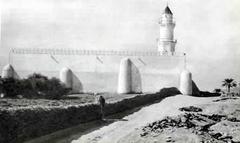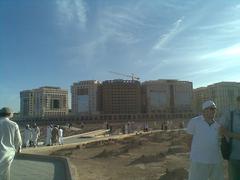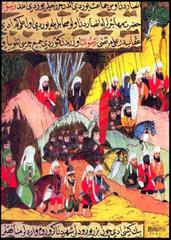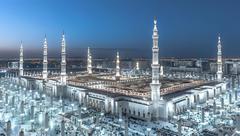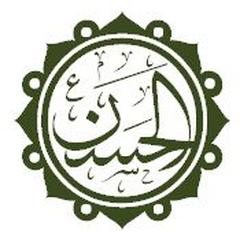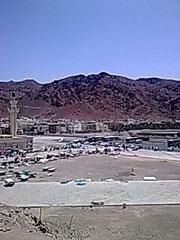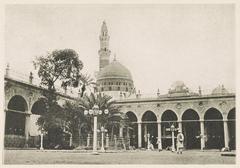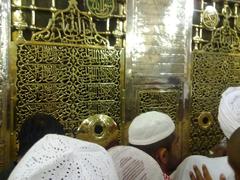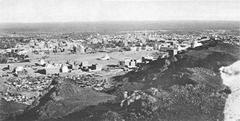
Guide to Visiting Masjid Quba in Medina, Saudi Arabia
Date: 16/07/2024
Introduction
Masjid Quba, located in Medina, Saudi Arabia, holds a place of immense historical and spiritual significance in Islamic tradition. As the first mosque built by the Prophet Muhammad (PBUH) after his migration from Mecca to Medina in 622 CE, it symbolizes the establishment of the early Muslim community and the beginning of a new era (Saudi Railways). The mosque was initially constructed with humble materials such as unbaked bricks and palm trunks, reflecting the modesty of the early Muslim society (Wikipedia). Over the centuries, Masjid Quba has undergone numerous renovations and expansions to accommodate the increasing number of worshippers and to enhance its architectural beauty. The most significant renovation occurred in 1986 under the Saudi government’s direction, which retained traditional Medina architecture while incorporating modern facilities like air conditioning and sound systems (Wikipedia). Today, Masjid Quba is a vibrant religious and community hub, capable of accommodating over 20,000 worshippers at a time (Welcome Saudi). This comprehensive guide will explore the rich history, architectural evolution, spiritual significance, and practical travel tips for visiting Masjid Quba, offering a profound experience for both pilgrims and history enthusiasts.
Table of Contents
- Introduction
- Foundation and Early Construction
- Architectural Evolution
- Historical Significance
- The Quba Prayer
- Modern-Day Masjid Quba
- Visitor Experience
- Conclusion
- FAQ
- References
Foundation and Early Construction
Masjid Quba holds the distinction of being the first mosque built by the Prophet Muhammad (PBUH) after his migration from Mecca to Medina. The foundation stone of the mosque was laid by the Prophet himself on the first day of his arrival in Medina, which was Monday, 12th Rab’i al-Awwal, 1 AH (16th July 622 CE) (Saudi Railways). This act of laying the foundation stone was a significant moment, symbolizing the establishment of a new Muslim community in Medina.
The initial construction of Masjid Quba was a simple affair, reflecting the humility and modesty of the early Muslim community. The mosque was built using unbaked bricks and palm trunks, with a roof made of palm leaves. The Prophet Muhammad (PBUH) and his companions, including Abu Bakr (RA), actively participated in the construction, carrying bricks and other materials (Wikipedia).
Architectural Evolution
Over the centuries, Masjid Quba has undergone several renovations and expansions to accommodate the growing number of worshippers and to enhance its architectural beauty. The mosque’s original simple structure has been replaced by a more elaborate design, featuring a rectangular shape with a large courtyard and a prayer hall adorned with intricate designs and calligraphy (Saudi Railways).
One of the most significant renovations took place in 1986, under the direction of the Saudi government. This renovation retained the traditional Medina architecture, characterized by ribbed white domes and basalt facing, while incorporating modern elements to enhance the mosque’s functionality and aesthetic appeal. The courtyard was flagged with black, red, and white marble, and the mosque was equipped with modern facilities such as air conditioning and sound systems (Wikipedia).
Historical Significance
Masjid Quba is not only significant for being the first mosque built by the Prophet Muhammad (PBUH) but also for its role in the early Islamic community. The mosque served as a place of worship, a community center, and a meeting place for the early Muslims. It was here that the Prophet Muhammad (PBUH) and his companions would gather for prayers, discussions, and community activities (Life in Madinah).
The mosque is also mentioned in the Quran, in Surah At-Tawbah (9:108), where it is referred to as a mosque founded on piety and righteousness. This verse highlights the spiritual significance of Masjid Quba and its importance in the Islamic faith (Wikipedia).
The Quba Prayer
One of the unique aspects of Masjid Quba is the special prayer associated with it. According to a hadith narrated by Ibn Umar, the Prophet Muhammad (PBUH) said, “Whoever makes ablution at home and then goes and prays in the Mosque of Quba, he will have a reward like that of an Umrah” (Saudi Railways). This hadith underscores the spiritual rewards of praying at Masjid Quba and has made it a popular destination for pilgrims visiting Medina.
Modern-Day Masjid Quba
Today, Masjid Quba stands as a testament to the enduring legacy of the Prophet Muhammad (PBUH) and the early Muslim community. The mosque can accommodate more than 20,000 worshippers at a time and is open to visitors 24/7. It features a large prayer hall, a central courtyard, and several smaller prayer areas, all designed to provide a serene and spiritual environment for worshippers (Welcome Saudi).
The mosque’s architecture reflects a blend of traditional Islamic styles and modern design elements, with white marble domes, arches, and columns creating a visually stunning and spiritually uplifting space. The mosque also includes facilities such as shops and offices, making it a vibrant community hub (The Complete Pilgrim).
Visitor Experience
Visiting Hours and Tickets
Masjid Quba is open to visitors 24/7, allowing for flexible visiting hours and the opportunity to experience the mosque’s serene atmosphere at any time of day. There are no tickets required to enter the mosque, making it accessible for everyone.
Travel Tips
- Dress Code: Visitors are encouraged to dress modestly and maintain a respectful demeanor while at the mosque. Men should wear clothing that covers their shoulders and knees, while women should cover their heads, arms, and legs.
- Accessibility: The mosque is equipped with facilities to accommodate visitors with disabilities, including ramps and accessible restrooms.
- Guided Tours: Although not mandatory, guided tours are available and can provide deeper insights into the mosque’s history and significance.
- Photographic Spots: The mosque’s architecture offers several picturesque spots for photography. However, always be respectful and avoid interrupting worshippers.
Nearby Attractions
While visiting Masjid Quba, consider exploring other historical sites in Medina such as the Prophet’s Mosque, Qiblatain Mosque, and the Seven Mosques. These sites offer additional insights into Islamic history and the life of the Prophet Muhammad (PBUH).
Conclusion
Masjid Quba’s rich history, architectural beauty, and spiritual significance make it a must-visit destination for Muslims and those interested in Islamic history. Its enduring legacy as the first mosque built by the Prophet Muhammad (PBUH) and its continued role as a place of worship and community gathering highlight its importance in the Islamic faith. Whether you are visiting for prayer, reflection, or to learn more about Islamic history, Masjid Quba offers a profound and enriching experience.
FAQ
- What are the visiting hours for Masjid Quba? Masjid Quba is open 24/7.
- Is there an entry fee for Masjid Quba? No, there are no tickets required to enter the mosque.
- Can I take photos inside Masjid Quba? Yes, but be respectful and avoid disturbing worshippers.
- Are there guided tours available? Yes, guided tours are available and can enhance your visit.
References
- Wikipedia, 2024, Quba Mosque
- Saudi Railways, 2024, Masjid Quba - Madinah
- Welcome Saudi, 2024, Masjid Quba - Madinah

